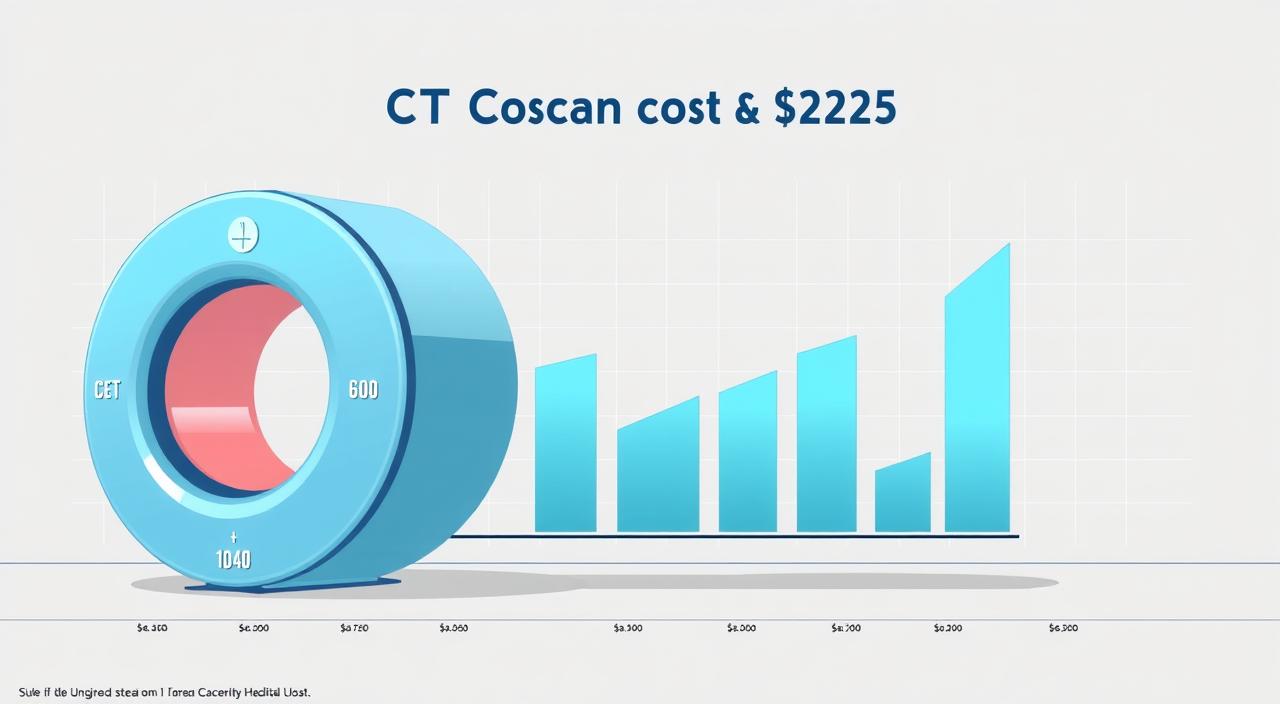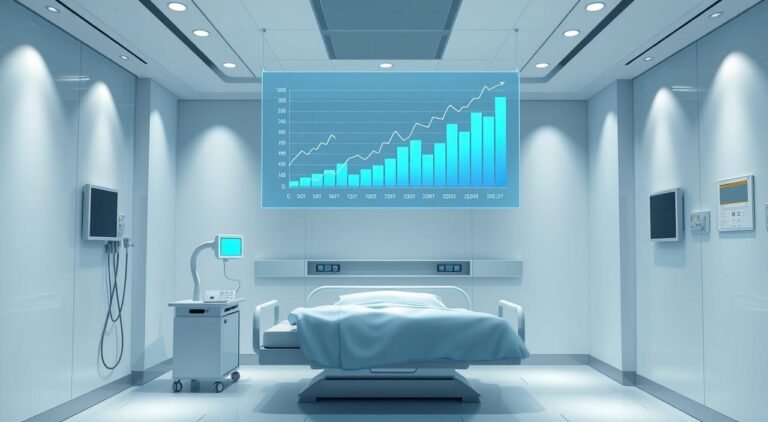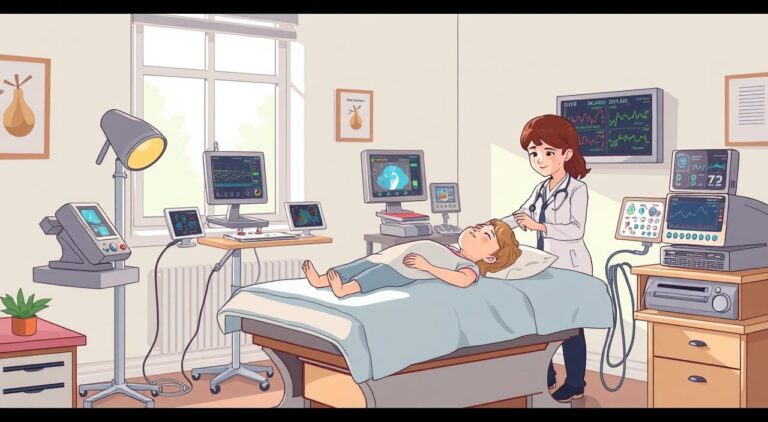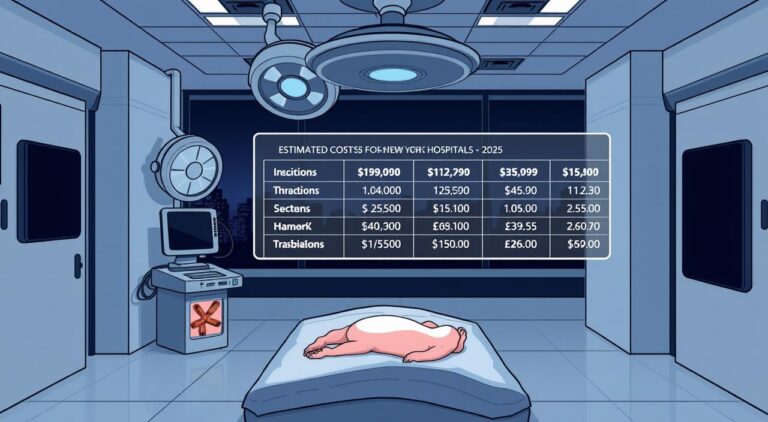How much does a CT scan cost in the United States 2025
Planning for a medical procedure often starts with one big question: what will it cost? For those needing a computed tomography scan, the price can vary widely. In 2025, the typical expense for this diagnostic imaging ranges from $300 to over $3,280.
Understanding this financial range is the first step to making a smart healthcare choice. The final bill depends heavily on where you have the procedure done. An independent imaging center often provides a more affordable rate, averaging around $398. Hospital-based services, however, can lead to significantly higher charges, sometimes reaching $7,000 or more.
This guide will break down the factors that influence your final expense. We will explore how your insurance, geographic location, and the specific type of scan needed all play a crucial role. Knowing these details empowers you to find the most cost-effective option without compromising on quality.
Key Takeaways
- The price for a CT procedure in 2025 has a broad range, from a few hundred to several thousand dollars.
- Choosing an independent imaging center can lead to substantial savings compared to a hospital.
- Your insurance coverage is a primary factor in determining your out-of-pocket cost.
- The body area scanned and the use of contrast dye also impact the final price.
- Researching prices and comparing facilities beforehand can help you manage this healthcare expense effectively.
Introduction
Modern healthcare relies heavily on advanced diagnostic tools like computed tomography to provide critical health information. This imaging technology creates detailed three-dimensional images of bones, organs, and soft tissues. Over 80 million of these scans are performed annually in the U.S., making them essential for modern medicine.
These tomography procedures have become indispensable for physicians to detect internal injuries and monitor treatment progress. The cross-sectional images offer far more detail than standard X-rays. This gives healthcare providers unprecedented precision in diagnosis.
However, the significant cost variability across facilities creates financial uncertainty for many patients. Those without comprehensive insurance coverage face particular challenges. Understanding the pricing landscape is crucial for making informed healthcare decisions.
This guide provides transparent, data-driven information to help you navigate these expenses. Being informed about scan costs and insurance coverage puts you in control of your healthcare spending. Whether facing your first procedure or seeking better pricing, this knowledge empowers you to avoid unexpected medical bills.
What Factors Affect CT Scan Cost
The final price tag for medical scans isn’t arbitrary—it’s shaped by multiple interconnected factors. Understanding these elements helps you anticipate expenses and make cost-effective choices.
Facility and Location Impact
Where you have your imaging done dramatically influences the scan cost. Hospital-based procedures often carry significantly higher price tags than independent imaging centers. Emergency room scans come with premium pricing due to overhead and staffing requirements.
Geographic location creates substantial variations in medical costs. Patients in different cities may pay more than double for identical scans. Limited facilities in rural areas can also drive up prices.
Insurance and Self-Pay Considerations
Your insurance coverage fundamentally changes what you pay out of pocket. Different plan types—employer-sponsored, marketplace, or high-deductible—affect your final expense.
Self-pay patients can often negotiate discounted rates. These “cash prices” are typically lower than what facilities bill to insurance companies. Always ask about self-pay discounts upfront.
Additional factors like contrast dye requirements and the complexity of the body part being scanned also contribute to the final invoice. Considering all these elements together can lead to savings of thousands of dollars.
CT Scan Cost by Body Part & Procedure Type
The specific area of your body requiring examination is one of the biggest determinants of your final medical bill. Prices vary significantly depending on the body part scanned.
This variation exists because imaging complex areas like the abdomen demands more time and expert analysis.
Head, Chest, Abdominal, and Other Areas
Where you get the procedure also dramatically affects the scan cost. Independent centers are consistently more affordable.
For a head scan, expect to pay $350-$1,400 at an imaging center. A hospital may charge $500-$5,000 for the same procedure.
Chest imaging ranges from $320-$1,600 at a center versus $700-$6,500 at a hospital. Abdominal scans are often among the most expensive, costing $500-$1,500 or $650-$7,000+.
Knowing the expected price range for your specific body part allows for smarter budgeting and helps you spot overpriced facilities.
Contrast Versus Non-Contrast Pricing
The use of contrast dye is another key cost factor. This special substance helps highlight blood vessels and organs.
Procedures using contrast typically add $100 to $300 to the total. The national average for a contrast scan is around $695.
While it increases the price, contrast is sometimes medically essential for a clear diagnosis. Always ask your provider if it is truly necessary for your situation.
How much does a CT scan cost in the United States 2025
Healthcare consumers deserve transparent pricing information for medical procedures. The complete financial picture for diagnostic imaging reveals a broad spectrum from $300 to over $6,750.
Outpatient centers typically charge $300-$2,000 for these essential scans. Hospital-based services often range from $500 to $7,000+. The national average out-of-pocket expense sits around $398.
Real-world scenarios demonstrate dramatic differences. An uninsured patient might pay $400-$800 at an imaging center. The same person could face bills exceeding $5,000 at a hospital emergency room.
Understanding these ranges empowers patients to question unexpectedly high quotes. The $398 average represents a middle-ground scenario for standard procedures without contrast.
Price transparency regulations now require facilities to provide upfront estimates. This gives consumers more power than ever to comparison shop. Researching options before scheduling can save $1,000-$5,000.
Use this pricing data to set realistic budget expectations. Identify fair market rates in your geographic area for optimal care decisions.
Affordable CT Scan Options
The facility you select for your medical imaging plays a crucial role in determining your out-of-pocket costs. Smart patients explore alternatives beyond traditional hospital settings.
Outpatient imaging centers represent your best opportunity for significant savings. These facilities provide identical diagnostic accuracy at a fraction of hospital prices.
Outpatient Imaging Centers and Urgent Care Clinics
Independent centers operate with lower overhead and don’t charge facility fees. They pass these savings directly to patients. Many urgent care clinics now offer on-site scanning capabilities.
These locations provide convenient access with extended hours. They maintain competitive pricing while using the same FDA-approved equipment.
Uninsured patients can often receive 30-50% discounts by paying upfront. This brings basic scan costs down to $200-$600. Always ask about cash pricing options.
Payment plans spread expenses over 6-24 months with little or no interest. This makes expensive procedures more accessible. You don’t compromise on care quality with these alternatives.
Certified technicians and board-certified radiologists ensure professional results. Call multiple centers in your area to compare quotes. Prices can vary by hundreds of dollars even within the same city.
CT Scan Cost with and without Insurance
The presence or absence of health coverage creates two vastly different financial scenarios for patients. Your insurance status fundamentally transforms what you’ll pay for these essential diagnostic procedures.
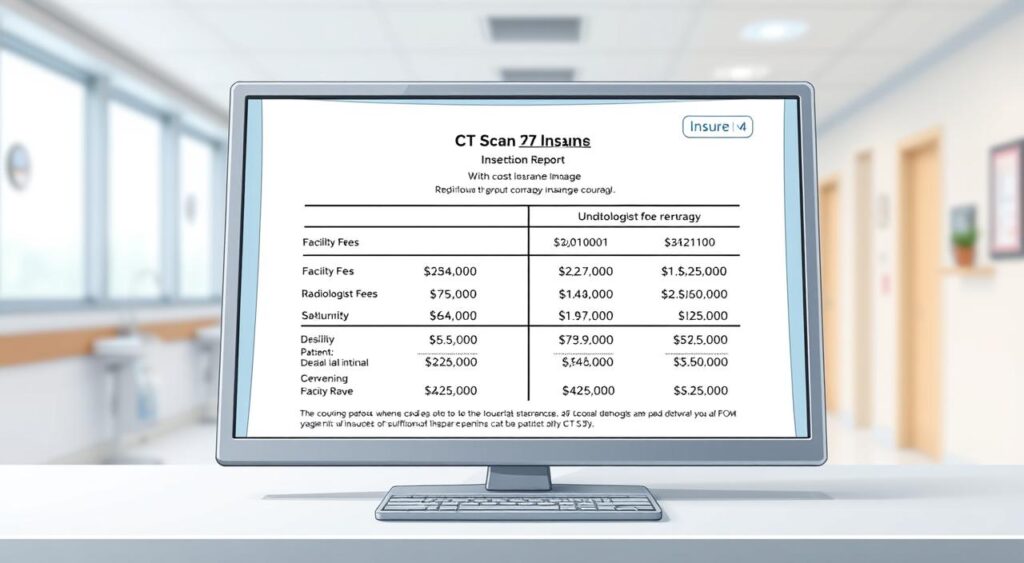
Patients with comprehensive health insurance typically see their financial responsibility reduced to manageable copays. These fixed amounts range from $50 to $500 after meeting annual deductibles.
Understanding Deductibles and Copays
Your deductible represents the amount you must pay out-of-pocket before your insurance begins covering services. Until you reach this threshold, you’re responsible for the full scan cost.
After meeting your deductible, copays or coinsurance kick in. Copays are fixed amounts, while coinsurance represents a percentage of the total bill. Both vary significantly by insurance plan.
Always verify that your chosen facility is in-network with your insurance provider. Out-of-network locations can result in dramatically higher costs that may not count toward your deductible.
Patients without insurance face the full financial burden but can leverage self-pay discounts. Many facilities offer substantial reductions for upfront cash payments, often making costs more manageable than for insured patients who haven’t met deductibles.
Health Savings Accounts and Health Reimbursement Accounts provide tax-advantaged ways to pay for these procedures. Contact your insurance company before scheduling to understand your specific coverage details and avoid surprise bills.
Outpatient vs Hospital-Based CT Scans
The choice between outpatient and hospital settings for diagnostic imaging represents one of healthcare’s most significant financial decisions. National averages reveal a staggering difference: outpatient facilities charge around $525, while hospital-based procedures average $4,750.
This nearly tenfold price gap makes facility selection critically important for your budget. Choosing a hospital for a routine procedure can add $4,000-$6,000 to your medical expenses without providing additional diagnostic value.
Hospital-based scans serve essential purposes for emergency situations and critically ill patients. These settings provide immediate physician consultation and comprehensive monitoring for complex conditions. The higher costs reflect 24/7 staffing and emergency preparedness requirements.
For scheduled, non-emergency evaluations, outpatient centers offer identical quality at substantial savings. They use the same advanced technology and employ equally qualified technicians. Board-certified radiologists interpret results with the same precision.
Unless you require emergency care, specifically request referrals to outpatient imaging centers. Discuss facility options openly with your healthcare provider to determine medical necessity. This simple conversation can save thousands while maintaining diagnostic accuracy.
Preparing for Your CT Scan
Knowing what to expect before your appointment can transform a potentially stressful experience into a smooth, efficient process. Proper preparation ensures your diagnostic imaging yields the clearest results.
Pre-Scan Instructions and Safety Tips
Dietary restrictions vary by the type of procedure. Abdominal scans and those requiring contrast typically need four hours without solid foods.
Clear liquids are usually permitted up to two hours before your appointment. Head and extremity scans often have no dietary restrictions.
Remove all metal objects before your scan. Jewelry, watches, and clothing with metal fasteners can interfere with image quality. These items may create safety hazards during the procedure.
What to Expect During the Procedure
The actual scan takes only 10-15 minutes. You’ll lie on a padded table that slides into the circular opening of the machine.
Computed tomography involves the machine rotating around your body, taking multiple X-ray images from different angles. These are compiled into detailed 3D images of your organs and tissues.
If contrast dye is needed, you might experience a warm sensation or metallic taste. These are normal temporary reactions. The technician may ask you to hold your breath briefly for clear imaging.
Communicate any discomfort during the procedure. Inform staff about allergies, kidney issues, or claustrophobia beforehand for appropriate precautions.
Questions to Ask Your Healthcare Provider
Being prepared with specific inquiries ensures you receive complete cost transparency before scheduling any medical imaging. Asking the right questions transforms you from a passive patient into an informed healthcare consumer.

This proactive approach protects your financial well-being while ensuring you understand your diagnostic needs. Don’t hesitate to request detailed information about every aspect of your procedure.
Clarifying Cost Estimates
Start by asking for a comprehensive breakdown of all expenses. Request a written estimate that includes facility fees, technician charges, and radiologist interpretation cost.
Inquire about contrast material fees if your scan requires them. Ask if outpatient centers offer the same quality at lower prices. This information helps you make budget-conscious decisions.
Insurance Coverage and Payment Plan Inquiries
Verify that the facility accepts your specific insurance plan. Ask about pre-authorization requirements to avoid claim denials. Confirm whether the provider is in-network for optimal insurance benefits.
Discuss payment options if you’re paying out-of-pocket. Many facilities offer self-pay discounts or installment plans. These questions help manage your healthcare expenses effectively.
Remember, asking these questions demonstrates responsible healthcare consumerism. Providers respect patients who take ownership of their medical and financial decisions.
Risks, Recovery, and Post-Scan Care
While CT imaging provides crucial diagnostic information, patients often have questions about potential risks and recovery. Understanding these aspects ensures you feel confident about your healthcare decisions.
Potential Side Effects and Radiation Concerns
These procedures use ionizing radiation to create detailed images of your internal organs. The exposure is higher than standard X-rays but remains within safe limits for diagnostic purposes.
Research shows a minimal increase in lifetime cancer risk—approximately 0.05% per scan. However, radiation effects accumulate over time. Discuss your imaging history with your provider if you’ve had multiple scans.
Contrast dye reactions affect a small percentage of patients. Mild symptoms include warmth or metallic taste. Severe allergic responses are rare but require immediate medical attention.
Most people experience no side effects and resume normal activities immediately. If contrast was used, drink extra water for 24 hours to help your kidneys flush it from your blood.
Results typically arrive within 24-48 hours. Emergency cases receive priority interpretation. The diagnostic benefits far outweigh minimal risks for most medical conditions.
Don’t refuse necessary imaging due to fear. The information gained often prevents serious health conditions from worsening. Proper care and awareness ensure safe, effective diagnostic procedures.
Additional Resources and Trusted Links
Empower your healthcare decisions by connecting with the most trusted sources of medical knowledge. The following institutions provide comprehensive, up-to-date information about computed tomography.
Relying on these authorities ensures you get facts, not fear. They offer clear explanations about procedures, safety, and results.
Guidelines from Leading Medical Authorities
Bookmark these essential resources for accurate health information. They are invaluable for understanding your diagnostic needs.
- U.S. Food and Drug Administration (FDA): Find official safety data and regulatory details for computed tomography scans. Their guidance covers radiation exposure and device oversight. Visit: FDA CT Scan Information.
- Mayo Clinic: Access patient-friendly explanations of the scan process, preparation, and risks. This resource is perfect for understanding what to expect. Visit: Mayo Clinic CT Scan Overview.
- Cleveland Clinic: Learn how tomography compares to other methods like MRI (magnetic resonance imaging). This helps you understand when a CAT scan is the right choice. Visit: Cleveland Clinic CT Scan Guide.
- National Cancer Institute: Review evidence-based facts about the role of CT images in detecting and monitoring various conditions. This is a key source for understanding benefits and limitations. Visit: NCI CT Scan Fact Sheet.
Always discuss questions with your healthcare provider. Use this information to have informed conversations about your health.
Conclusion
The journey toward affordable medical imaging begins with understanding your options. These diagnostic procedures can range from $300 to over $6,750, but informed choices lead to significant savings.
Choosing outpatient centers over hospitals represents the single most impactful decision for managing expenses. This simple switch can save thousands while maintaining diagnostic quality.
Multiple factors influence your final out-of-pocket cost, including facility type, insurance coverage, the specific body area scanned, and contrast requirements. Price transparency empowers patients to compare options effectively.
Always consult healthcare professionals about medical necessity while discussing cost considerations. Never decline necessary scans without exploring payment plans and affordable alternatives.
This knowledge transforms patients into empowered healthcare consumers who advocate for both quality care and financial responsibility.
